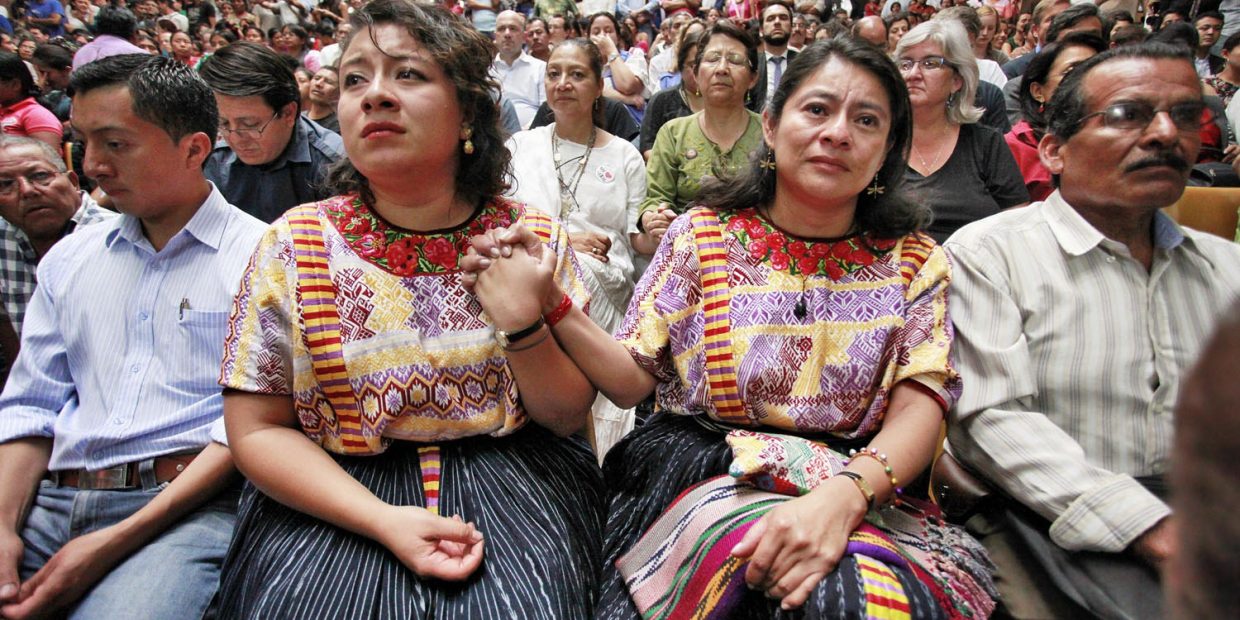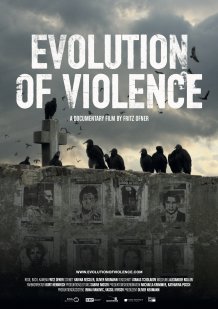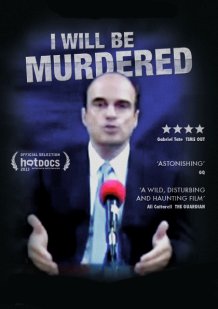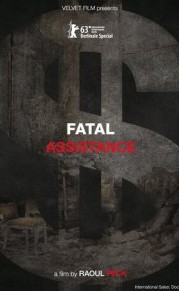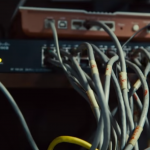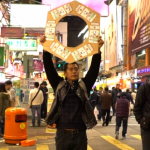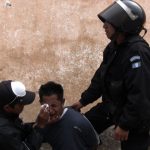By Emilie Van Blarcom
Director: Pamela Yates
Human Rights Watch Film Festival 2017 Review
500 Years follows the unification of the indigenous and non-indigenous people of Guatemala and their battle to end ongoing government oppression. Directed by Pamela Yates, the film is the third part in a trilogy of documentaries about Guatemala, following When the Mountains Tremble (1983) and Granito: How to Nail a Dictator (2011). The film focuses on the universal themes of justice, racism, power, and corruption. From the trial of General Efrain Rios Montt to the movement that removed President Otto Perez Molina, 500 Years tells the story of the recent events that finally paved way for a reformed Guatemala. The documentary opens with grainy black and white footage of the Guatemalan people looking directly into the camera, breaking the fourth wall and signifying that they are engaging with the camera in order to let their story be told. The film is then split up into three parts to organize the events of the recent movement that took place over a span of three years.
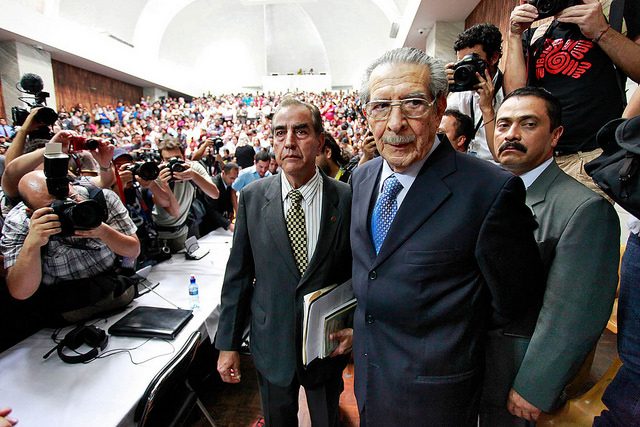
PHOTO: Daniel Hernández-Salazar
The first part, ‘The Trial’, recounts the hearing of General Rios Montt, who was accused of ordering murders, rapes, and tortures on civilians. The Mayan people pushed to get Rios to trial for 13 years, after he launched a scorched earth attack on the Mayan civilians. The story is narrated by the protagonist, Irma Alicia Veláquez Nimatuj, a newspaper journalist and anthropologist. Irma dives into the lives of the Mayan people throughout the trial, gaining insight into how Rios had directly hurt them and their families. This gives the film a very authentic feel as it allows its viewers to learn about the devastating events that affected these people’s lives forever.
The documentary transitions back and forth between personal accounts and footage from the trial. This exemplifies the frustration the people felt before, during, and after the hearing took place. The film confronts the key question that has plagued country for decades: Did the Guatemalan army commit genocide on its people or was it just a civil war? The judge’s final verdict finds General Rios guilty of genocide and sentences him 50 years to prison. Pamela Yates manages to rivetingly capture the emotion and pride of the Guatemalan people at this exact moment during a very captivating time in Guatemalan history. While the film alternates between both sides of the story, highlighting an interview with General Rios Montt’s daughter, Zury, it definitely leans towards the voice of the people and how their lives were changed. By being intertwined with the opinions of the civilians, Zury’s thoughts about the trial and her father are almost mocked rather than respected.
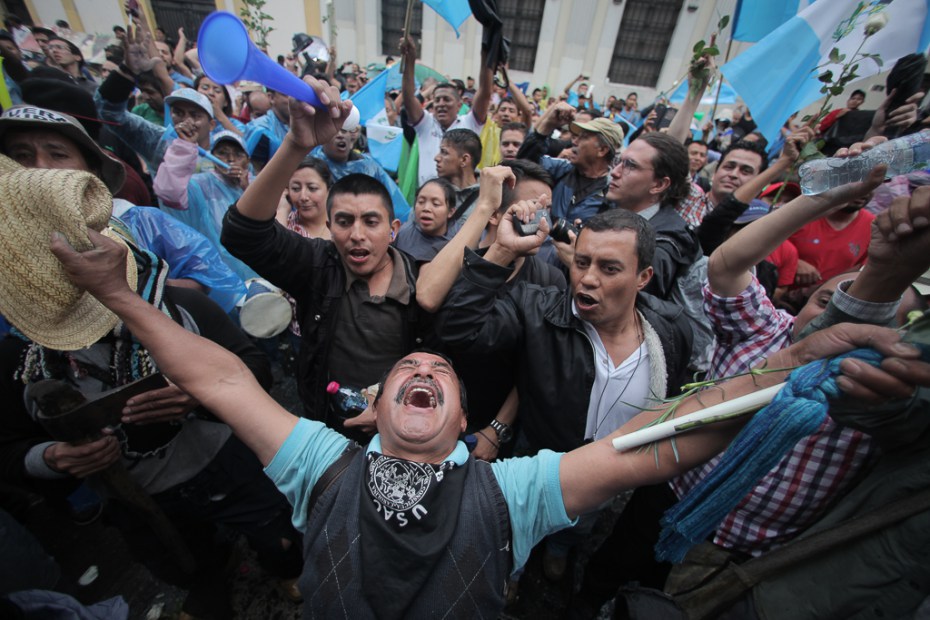
PHOTO: Saul Martinez
The second part of the film, ‘Defending the Land’, trails Andrea Ixchiu, a Mayan organizer dedicated to unifying the indigenous and non-indigenous people for a better Guatemala. Andrea is portrayed as a strong female character, leading protests and speaking for the mass majority against the political elite. The marches depicted in the following scenes display citizens blocking massive massacre sites and resisting the development of transnational megaprojects. While this segment sometimes lags due to its focus on footage of people waiting for a reaction in the streets, it also gives Mayan women a chance to share their voice and prove themselves to be resilient human beings in a sexist society. A range of the speakers are Guatemalan women, telling their stories of fear, love, and courage. This transforms the documentary to be not only about the genocide, but also about gender equality.
The third and final part of the film, ‘The Uprising’, is structured around the process of overthrowing President Otto Perez Molina following accusations that he stole large amounts of public money. It conveys how the uprising grew day by day over a 103-day period in order to finally remove the president from office. The climax shows the burst of people running into the streets all over the country, performing the largest mass demonstration Guatemala has ever seen. The streets are filled with colourful flags and people waving banners of freedom, amplifying the historic moment in real time. The final scene embodies the pride of the Guatemalan people, showing close-up tears of happiness streaming down their faces and leaving the audience feeling just as hopeful for the future of the country. As indigenous women release a vibrantly decorated flag into the air, Yates presents the idea that the Mayan people will keep rising until they can reach a new Guatemala that supports their people, and government, equally.
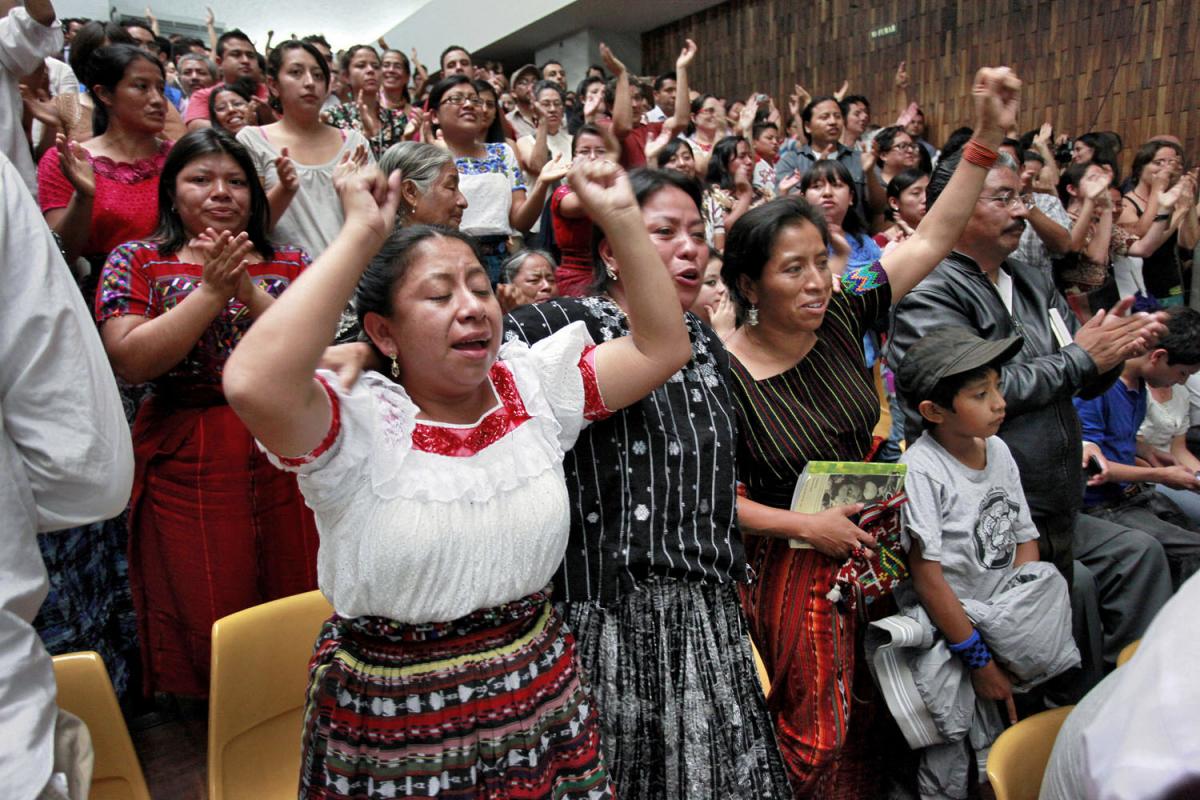
PHOTO: Daniel Hernández-Salazar
500 Years brings to light a despicable genocide that has been hidden and ignored by society for years. Through the extensive raw footage and interviews shared, the Guatemalan people are finally given a chance to speak their mind about a topic that’s been silenced. The three parts of the documentary underline the three main events that implemented change within the country. The film goes beyond finding justice for the Guatemalan people and questions any corruption that has been suppressed by governments throughout the world.
500 Years will screen as part of the Human Rights Watch Film Festival 2017 in London at the Barbican on March 14. Find more info here.
Recommended documentaries on FilmDoo:
To bring this film to your region, cast your DOOVote on the 500 Years page.
Featured image by Daniel Hernández-Salazar.

